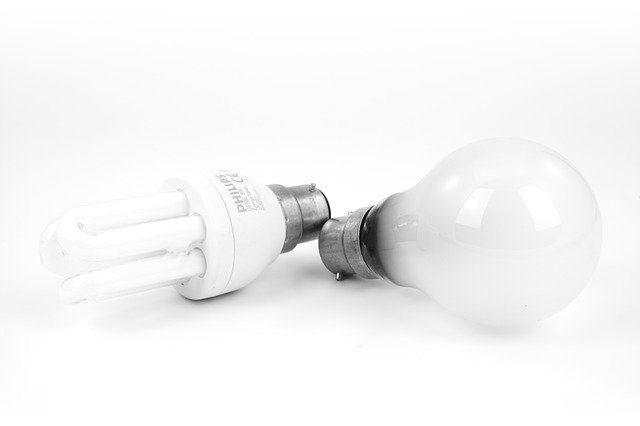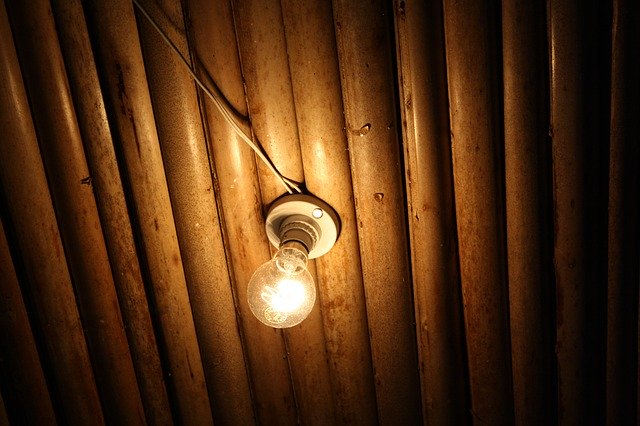I have memories of my father changing light bulbs by using a piece of cloth to hold the hot incandescent bulb to unscrew it and then warning us not to touch it, seeing our curious eyes.
It always looked like he was handling a hot cake, even though the glass bulb did not appear to be a hot object!
But it must have been scalding hot. Now I know exactly how hot and I will share it with you.
It could save you a burnt finger or two.
Incandescent bulbs reach the highest temperatures and take the longest to cool down, about an hour to reach room temperature. LEDs on the other hand operate at temperatures that are a little above room temperature, so it takes them a few minutes to become cool to touch.
How Hot Do Different Light Bulbs Get?
Different light bulbs have varied mechanisms of how they emit light, which decides their operating temperature.
Let’s take a look at incandescent, LEDs, and CFLs to see which bulb is quickest to cool down. Any guesses?
Incandescent
To know how much heat is produced by incandescent bulbs, let’s quickly examine their operating mechanism.
When electricity starts flowing into the thin tungsten filament inside the glass bulb, it gets converted to heat and light energy.
But once you find out what is the distribution of said energy, you will understand how hot an incandescent can get.
Around 90% of the electricity is converted to heat energy, and only 10% is converted to light energy.
That is a lot of energy being used to heat up the tungsten filament. Therefore, the bulb can get quite hot as soon as it switches on, depending on its wattage.
To be exact, a 75-watt bulb’s glass body can reach a temperature of 500 degrees Fahrenheit! That’s 260 degrees Celsius.
Incandescents give off the highest heat among the most commonly used bulbs.
Their heat-giving properties allow them to be used for specialized purposes like heat therapy lamps and Easy-Bake Oven toys that actually baked cookies with a 110-watt incandescent.
LED Bulbs
All sources of light will give off heat as a by-product, no matter how minuscule. LEDs also generate heat when turned on, but by no means is that heat comparable to other bulb types.
LEDs function well in cool places. Heat and unventilated environments spell trouble for long-lasting functioning of an LED bulb.
That is why an LED bulb comes equipped with heat sinks. These sinks are cooling fans made of metal that transfer heat to themselves, to protect the sensitive electronics in an LED’s circuitry.
As a comparison, LED sees 80-90% utilization as light energy and only a heat wastage of around 10-20%.
Most tests show that the bulb’s body’s surface is only about 85°F or 30°C.
That is only a little above room temperature on average. This is after the LED has been running for at least 30 minutes.
The base of the LED, however, is where the temperature is high enough to cause your skin to hurt.
Tests show that the base can get to a temperature anywhere between 145°F to 175°F, that is between 63°C to 80°C.
So, if you need to replace the LED bulb immediately after it has blown out, make sure to leave it a couple of minutes, and just to be safe, avoid touching the base.
CFL Bulbs
CFL bulbs work due to the interaction of mercury vapor and the phosphorus coating inside the tube. The mercury vapor gets ionized when the electric when you turn on the switch.
As the mercury tries to ground and return to an un-ionized state, its electrons emit energy in UV radiation, exciting the phosphorus coating. This interaction then emits photons of visible light.
Therefore, there is not as much heat generation. Added to that, the longer tubing of a fluorescent allows heat to dissipate quickly.
Around 40% of electrical energy is converted to light energy, so CFLs are more efficient than incandescents.
Also read: How To Choose LED Replacement For CFL?
To be exact, a 100-watt equivalent CFL bulb can reach temperatures of up to 180 degree Farhenheit, or 82 celsius.
How Long Does It Take To An Incandescent Bulb To Cool Off To Room Temperature?
As you can see, it is the incandescent bulb that reaches the highest temperature. Which is why it also takes the longest to cool down, depending on a couple of factors.
A standard room bulb may take up to an hour to reach room temperature based on tests, which is about 22 degrees celsius, or 72 Fahrenheit, in cooler countries.
The socket of the future plays a part in the cooling downtime. If the room is not well-ventilated, or the fixture is in a tight space, the bulb stays warmer for longer.
Similarly, if the filament is thicker, the bulb might be longer lasting, but also takes longer to cool down.
Do LEDs Cool Down Longer Than Incandescents?
Now, if you want to compare how long LED bulbs take to cool off, you can start with some educated guesses.
Since an LED’s peak temperature reaches barely above room temperature, the body of the bulb will cool down within a matter of minutes.
The heat sink will take longer, but it, too, is made of metallic material with low thermal mass, which means it can quickly dissipate and cool down.
You would not be able to touch an incandescent after it has been on for a couple of hours. But an LED that has been running the same amount of time will be cool to touch in a few minutes.
Final Words
Well-ventilated fixtures and sockets are essential for all bulb types for all kinds of reasons. In this article, I have just highlighted another reason why.
Keeping light fixtures surrounded by adequate airflow will help bulbs cool down much faster.
Keep your fingers, kids, and pets safe from mistakenly touching bulbs that are off but still hot.
Have you accidentally touched hot bulbs without realizing how hot they got?
Do you consider LEDs to save costs and preventing injuries?
Share your thoughts with me in the comments below.
Looking for an LED bulb but not sure what type you need?
Check out my free bulb picker and select the right bulb within few clicks.





